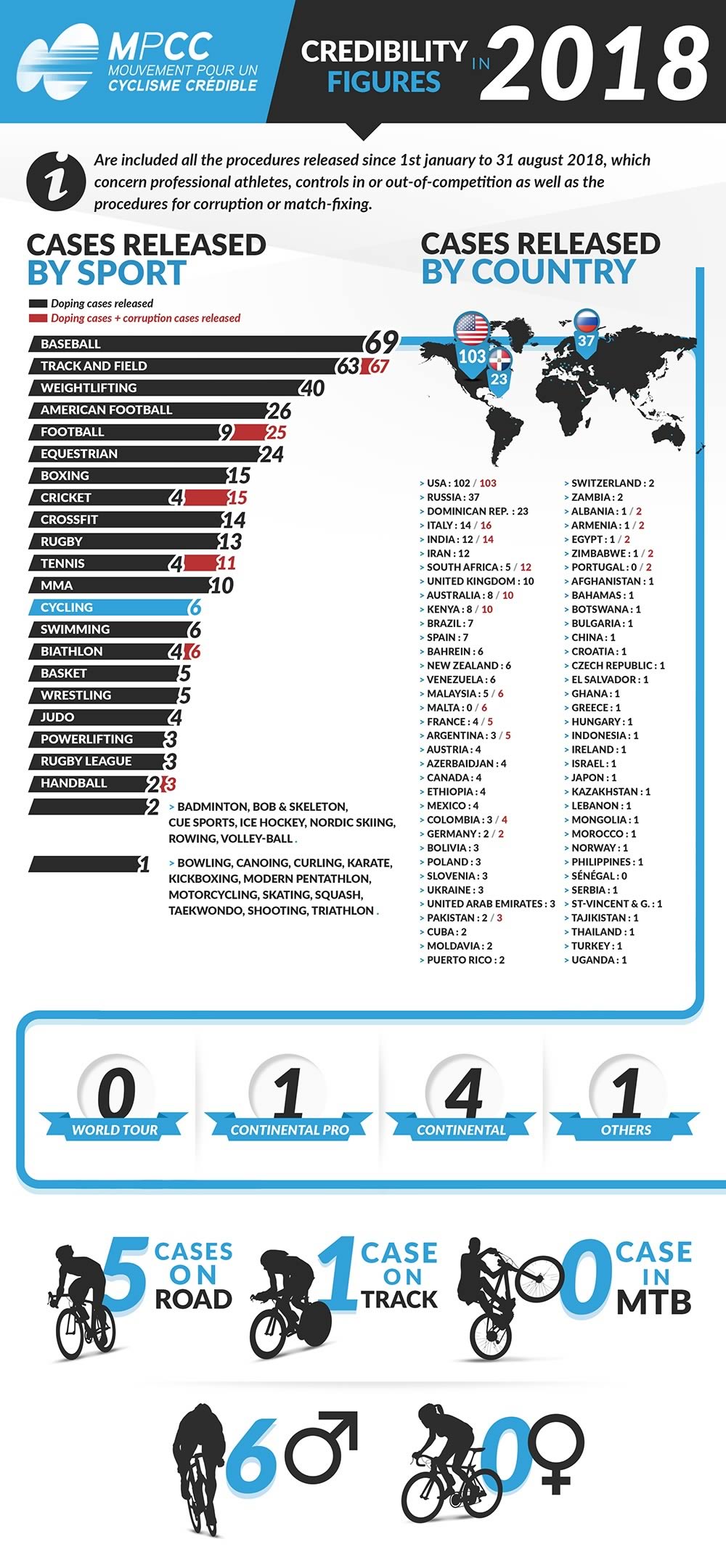The figures demonstrate that the credibility of a dozen of sports is more damaged than cycling.
We reckon cycling fans will be glad to see that their sport is ranked quite low (13th) in this classification of doping and corruption cases, far behind american sports, but also athletics, football and rugby. They are right to feel so, but not completely, and we are going to explain why.
It has been 5 years since we started to release this barometer, which only takes into account the cases that have been publicly revealed by the federations or the media. Among these cases, we only retain those concerning high-level or professional athletes.
This 5-year-long work could have enabled us to decipher trends. Unfortunately, we cannot really find any when it comes to cycling. With 17 cases across all the disciplines, the figures remains basically the same as the ones of the last years. 6 cases involving World Tour and Pro Conti teams: it’s 2 less than last year, but still 3 more than in 2016. Concerning road cycling, there has always been a little more than 10 cases for the last 5 years. We can however be glad that no corruption case happened in our sport. Of course, cycling is not a sport with a lot money at stake, especially on betting sites. Football or cricket, for example, are way more involved in these issues.
For the first time, MPCC took the corruption cases into account for this year barometer. Financial wrongdoing, as well as match-fixing, are now part of our study. These cases, often revealed by the media, cause huge damage to the credibility of sport, as much as doping cases. Even though the number of corruption cases is lower than doping affaires, they definitely exist: we have identified 136 of them (across all sports) in 2018. These corruption cases are spread across 50 countries, but revolve around a dozen of sports.
Corruption cases are much more scattered around the globe than doping cases. Broadly speaking, the main countries where credibility is badly damaged remain the same: United States, Russia and India can raise the size of their countries as a shield. This argument is not relevant when it comes to Italy (37 doping cases in 2017, 39 in 2018) and Dominican Republic (31 cases last year, 29 this year – essentially baseball players).
We can see that the number of doping cases that have been publicly revealed as soon as the disciplinary process or the punishment has been pronounced is increasing year after year (close to 600 this year). It does not mean that doping is on the rise. It shows that federations are now more likely to tackle their doping cases on the public scene, as they do with any other disciplinary action. There is also more transparency in how the anti-doping policy is lead. Five years ago, only twenty federations disclosed their doping cases. As of today, around fifty of them are doing so.
The one actual trend we can identify is that cycling is getting further away from the top of our doping cases classification. Though, cycling fans must mitigate their satisfaction: this is not due to a drop in doping cases, but mainly caused by this new transparency granted by the federations.

